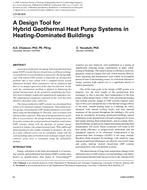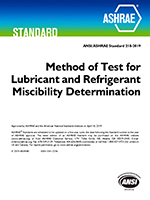There is an increasing focus on the possibilities of utilizing the absorptive ability of porous materials to create passive control of humidity variations in the indoor air. These variations result in peaks in the indoor air humidity due to moisture production or in the exterior building envelope due to the diurnal variations of outdoor air temperature and humidity. Passive control of the humidity of the indoor air—particularly together with passive thermal control—may lead to smaller energy use for climatization of buildings. For exterior envelopes, the choice of the right materials can lead to more durable constructions.
This paper describes the testing of a large range of very different thermal insulation materials in specially constructed laboratory facilities to determine their moisture buffer capacity. Both isothermal and non-isothermal experimental setups have been used. In the isothermal tests the material samples were exposed to the same change in the relative humidity of the ambient air on both sides, while the samples were exposed to variations in relative humidity only on the cold side in the non-isothermal tests.
The results of these rather different measurement principles are discussed, and different ways are presented to determine the moisture buffer capacity of the materials using partly standard material parameters and partly parameters determined from actual measurements.
The results so far show that the determination of moisture buffer capacity is very sensitive to the method of analysis used and, therefore, great care has to be taken when comparing results of different experiments. The paper discusses this issue and recommends a simple and consistent way to present the moisture buffer capacity of the materials in contact with the indoor air on the basis of experimental results.
Citation: Thermal Performance of Exterior Envelopes of Whole Buildings IX
Product Details
- Published:
- 2004
- Number of Pages:
- 14
- File Size:
- 1 file , 5.9 MB
- Product Code(s):
- D-BldgsIX115


